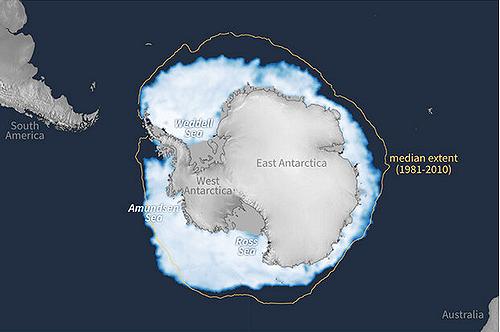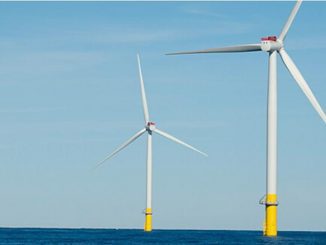
GENEVA, Switzerland, October 9, 2023 (ENS) – The year 2023 is now on track to be the warmest year on record, as numerous high temperature records broken in recent months are again smashed. The planet just suffered the hottest September in history by a record-breaking margin, according to an international dataset that the World Meteorological Organization uses for its climate monitoring reports.
September temperatures continued an extended streak of “extraordinary land and sea-surface temperatures and is an ominous signal about the speed with which greenhouse gases are changing our climate,” the WMO warned.
Scientists from the 187 Member States and six Member Territories that are WMO Members contributed data to inform the agency’s reporting.
It was the hottest August on record, by a large margin, and the second hottest ever month after July 2023, according to the Copernicus Climate Change Service ERA 5 dataset. August as a whole is estimated to have been around 1.5°C warmer than the preindustrial average for 1850-1900,
September had an average surface temperature of 16.38°Celsius. This was 0.5°C above the temperature of the previous warmest September, in 2020, and around 1.75°C warmer for the month of September compared to the pre-industrial reference 1850-1900 period, according to the EU’s Copernicus Climate Change Service, C3S, implemented by the European Center for Medium Range Weather Forecasts.
“Since June, the world has experienced unprecedented heat on land and sea. The temperature anomalies are enormous – far bigger than anything we have ever seen in the past,” said WMO Secretary-General Professor Petteri Taalas.
“Antarctic winter sea ice extent was the lowest on record for the time of year,” he said.
Antarctic sea ice extent remained at a record low level this year. Both the daily and monthly extents reached their lowest annual points in the satellite record in September, with the monthly extent nine percent below average.

In contrast to the Arctic, which has shown a decades-long decline in sea ice extent, the Antarctic has not exhibited a significant long-term trend, according to the U.S. National Oceanic and Atmospheric Administration, NOAA. As recently as 2014, Antarctic sea ice racked up an all-time-high winter maximum extent. Starting in 2016, however, Antarctic sea ice extents have fallen mostly below the 1981–2010 average, and 2023 extents have set daily record lows since April, NOAA reports.
“What is especially worrying is that the warming El Niño event is still developing, and so we can expect these record-breaking temperatures to continue for months, with cascading impacts on our environment and society,” Taalas said.
Europe had its warmest September on record, at 1.1°C higher than 2020, the previous warmest September, with many national temperature records. The heat has continued into October.
“WMO will work with our partners in the scientific community to try to understand what additional factors are contributing to this exceptional warming,” said Taalas.
The WMO provisional State of the Global Climate 2023 will be released at the start of this year’s UN climate change conference, COP28, in Dubai in November.
“The unprecedented temperatures for the time of year observed in September – following a record summer – have broken records by an extraordinary amount. This extreme month has pushed 2023 into the dubious honour of first place – on track to be the warmest year and around 1.4°C above preindustrial average temperatures,” said Samantha Burgess, deputy director of the Copernicus Climate Change Service.
“Two months out from COP28 the sense of urgency for ambitious climate action has never been more critical,” Burgess exclaimed.
Where is the World on Climate? The UN Takes Stock
The WMO’s September monthly figures were published as a separate new synthesis report issued by the UN Convention on Climate Change previewed Parties’ blueprint for decisions on the global stocktake at COP28.
The new synthesis report is designed to help governments reach a decision on the global stocktake at COP28. The global stocktake is part of the Paris Agreement and a key means to assess the world’s global response to the climate crisis and chart a better way forward.
The synthesis report is based on submissions received from 24 Parties on behalf of Party groups or individual Parties, representing 180 Parties and from 44 non-Party stakeholders as of October 2.
The Paris Agreement sets long-term goals to guide all nations to reduce global greenhouse gas emissions to limit the global temperature increase in this century to 2°C while pursuing efforts to limit the increase even further to 1.5 °C, to avoid or reduce adverse impacts and related losses and damages.
The fact that an individual month exceeds the 1.5 °C limit does not mean that the planet will permanently exceed the 1.5°C level specified in the Paris Agreement, which refers to long-term warming over many years.
There are differing views on the details of how to reach the goals of the Paris Agreement, but still, governments expressed broad agreement that past climate action has not been sufficient, and that more action by all Parties and support for developing countries is needed to limit global warming to 1.5 degrees Celsius, to avoid loss and damage, and to adapt to climate change.
Simon Stiell, executive secretary of UN Climate Change, said, “This report puts the cards on the table – except this is not a game. We know that we as the global community are not on track towards achieving the long-term goals of the Paris Agreement and that there is a rapidly closing window of opportunity to secure a livable and sustainable future.”
Featured image: Sunset over the Sea of Japan, September 24, 2023 (Photo by
hidepon4649)



